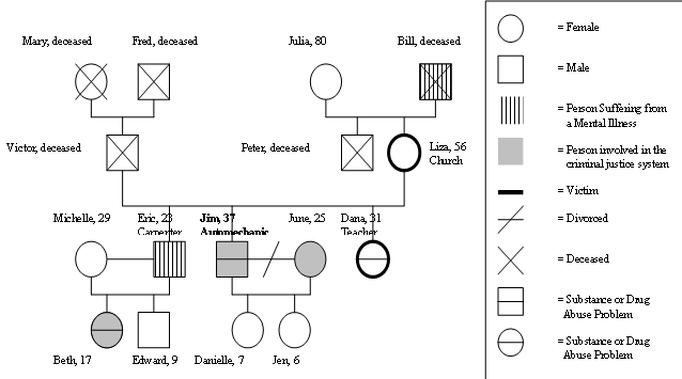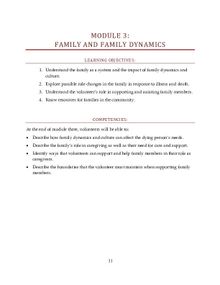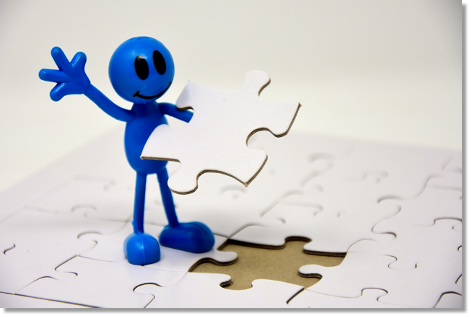Assignment: Create a Family Map
For this assignment, we are asking you to create a family map, similar to the image below.
Start with yourself in the middle and draw out from you connections to members of your family. Use squares for males and circles for females. Play with other shapes to represent non-genetic relationships (in-laws or friends who you consider family).
An X through a shape indicates they are deceased. Use the symbols in the legend at the right side of the graphic, or create your own legend and symbols relevant for your family.
Now consider what it would be like for a caregiver to attend one of the people on your map. What kind of dynamics will they be faced with as they navigate your family?
Start with yourself in the middle and draw out from you connections to members of your family. Use squares for males and circles for females. Play with other shapes to represent non-genetic relationships (in-laws or friends who you consider family).
An X through a shape indicates they are deceased. Use the symbols in the legend at the right side of the graphic, or create your own legend and symbols relevant for your family.
Now consider what it would be like for a caregiver to attend one of the people on your map. What kind of dynamics will they be faced with as they navigate your family?





